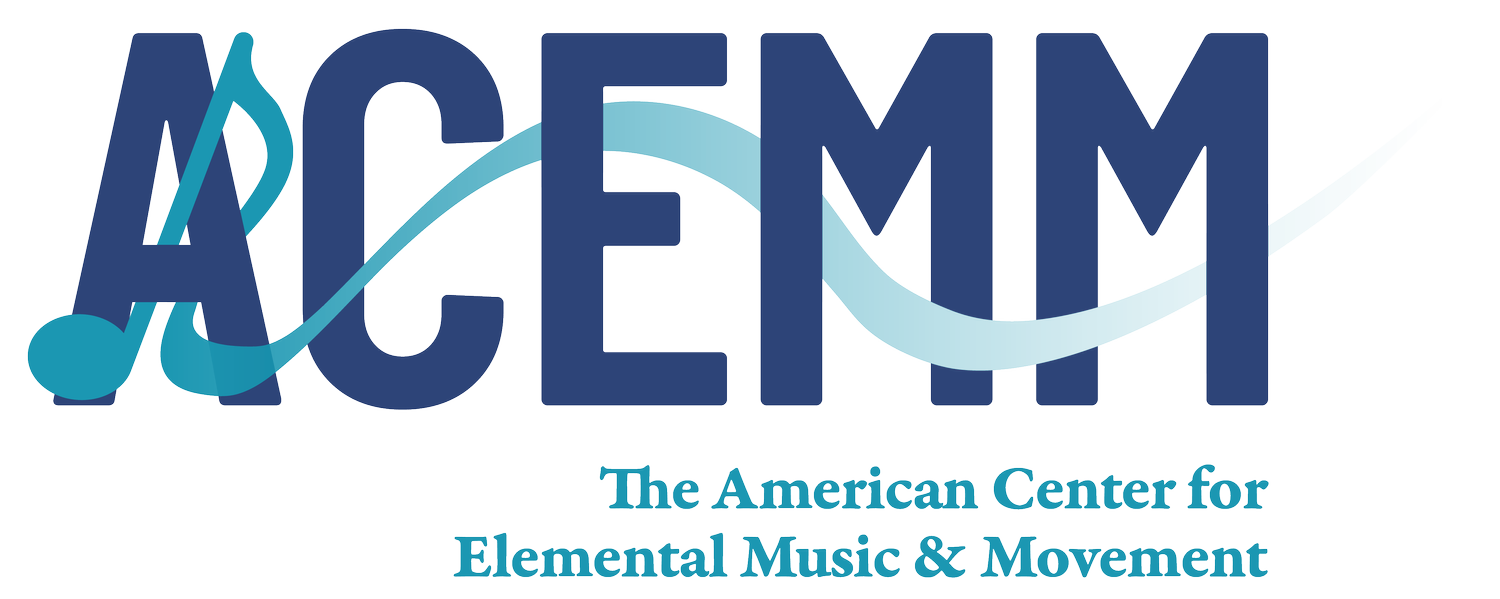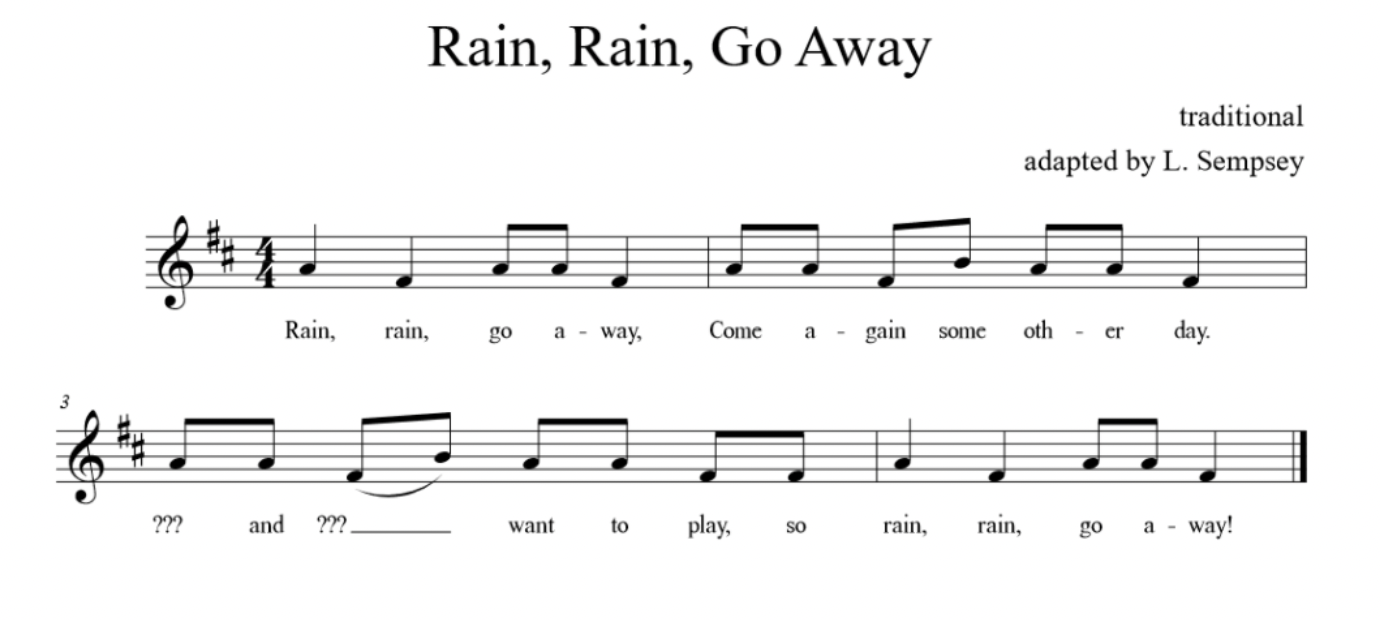Drip, Drop, Pitter, Patter and Explore!
It’s Music in Our Schools Month and spring is in the air, or at least we hope! The weather is often a topic of conversation, and the sounds of spring offer a wonderful opportunity to sing, say, dance and play in the music classroom.
Music educators usually agree that some important goals for the youngest learners through the end of first grade include developing tuneful singing, steady beat, and experiencing musical opposites. Learning classroom procedures, building independence at making a circle, moving appropriately in the music room to access supplies, handling instruments with care, and expressing their thoughts through creative movement are becoming more natural with each passing week. Along this train of thought, students are guided to begin barred instrument exploration. They always seem to be asking when will it be their turn to play ‘those big instruments’!
The following lesson ideas are designed to broaden experiences and explore new concepts while giving our youngest learners opportunities to deepen their skills in responding to and performing a steady beat as well as to singing and dancing.
Many rain-themed songs, poems, dances and art works are accessible to even the very youngest learners. Over the course of several lessons, students can explore the theme of rain, which will give them an opportunity to sing, move, and create while giving focus to in-tune singing and steady beat.
Drip, Drop: The Sound of Rain
One introduction to the differing sounds and intensities of rain could stem from the book Listen to the Rain by authors Bill Martin, Jr. and John Archambault. During the read-aloud, consider setting the mood in the classroom by playing a recording of rain in the background, and fade it out when the rain ends within the text. Afterwards, discuss all of the activities one may do in the rain. Questions like, “Do you ever go outside in the rain?” “What do you wear?” “Is there anything you bring with you?” “Have you ever played in the rain?” “What did you do that was really fun?” are prompts that can yield very exciting movement explorations! Some common answers might be: “walk and spin our umbrellas”, or “jump in puddles”.
Choose one idea for the students to explore first, for example, “jump in puddles”. Have students explore this idea by pretending to walk down a sidewalk and then jump in puddles. Next, musically contextualize their movement experience by having the students walk between and around the puddles. As this occurs, the teacher improvises walking music, perhaps on a xylophone, to match the walking movement. Interspersing the “jumping in the puddles” experience, the teacher narrates lightly, “Walk towards the puddle, and pause”. Pause the music by playing a tremolo. Then, adding musical tension, the students prepare their jump, and at a predetermined musical signal, they spring into the puddle and splash around all encouraged by the musical stimulus and accompaniment provided by the teacher.
Simple, improvised accompaniment on xylophone can provide a musical soundtrack for the students as they create movement gestures. These ideas materialize, having been developed first in language.
Pitter, Patter: Move Your Feet, Look and Listen
“Chee Chee Cha” from the New England Dancing Masters’ book, Down in the Valley is a ready to go resource! It is a child-friendly arrangement of “Singing in the Rain,” and is a structured activity song that has repetitive lyrics and cumulative movement. This song will inevitably end in giggles! Pair this high-energy experience with a look at the painting, New York Street Under the Rain by Stansilav Sidorov. Guide students to discuss what they see within the painting (objects, people, the taxi, etc.) as well as the colors (“Which objects did the artist paint with bright colors?”) and how this affects the way we perceive the mood of painting. Help them toward thinking more deeply about the taxi in the rain. “What does the driver of a car need to do in order to drive safely in the rain?” Answers like “turn on the headlights” and “use the windshield wipers” are good starting points, and a robust conversation could grow from just about any aspect of the painting.
To lighten the mood after discussing a rainy day, a fingerplay can create a joyful release. Try this little gem, “Windshield Wiper” while listening to windshield wiper sounds via YouTube. Simply repeat the fingerplay several times while moving with an intentional steady beat, in place, and then through space supported by the sound of the wipers on the video.
Rain Drops, Heart Beats, and Borduns
“Rain, Rain Go Away” may be one of the most well-known children’s songs in our culture. It is a great way to bring focus to and learn to track the steady beat on a heartbeat chart. While students sing and track, the teacher can play a simple bordun (a steady beat accompaniment played on an open fifth, in this case, the notes D and A) on a bass metallophone or xylophone to reinforce the steady beat and promote in-tune singing.
Kindergarteners tracking the steady beat
You can print this beat chart to use with your students: Beat Chart and Rain, Rain, Go Away mm 1 and 2
Extend students an invitation to play the xylophone with this adaptation: During the “???” portions of the song, the teacher sings individual students’ names to come up and play the bordun together on bass-sized instruments. In order to keep track of those who get a “special job”, you can check the student’s name off in a grade book. (This helps in future classes to keep track of which students have not yet had a turn.) Repeat several times to give multiple turns.
We use the following lyrics:
“Dripsy Dropsy” Glockenspiel
A springtime visit with glockenspiels, the smallest barred instruments, brings more creative exploration opportunities with the poem, “Dripsy Dropsy” by Leanne Guenther.
At first, students can explore the poem by showing their impressions of how they might mirror the way the rain is falling in the text by using their fingertips in the air. Students could demonstrate their impressions as well by transferring these to the sounds of a glockenspiel. Guided questions can help the students solidify their thoughts. “What would the ‘dripsy, dropsy’ raindrops sound like? Can you show me?” or, “What would the ‘pitter patter’ sound like on the glockenspiel?”
Continue to explore lines of the poem, “falling to the ground”, then, “fast then slow, until it stops” should create contrasting impressions. It is freeing for students to explore in the realm of what is possible instead of what is correct. The goal is creating a sound idea and this activity provides a gentle, aesthetically-minded framework.
The song “Rain, Rain” could be further explored as a pathway to improvisation, allowing two or three students at a time to explore on the glockenspiels while the bordun plays. An ABA form could materialize: “Rain Rain” – Glockenspiel Improvisations – “Rain Rain.” It is a feasible goal by the end of a given class that all students have had a chance to perform a special job on an instrument for the day.
Listening Transitions
The theme of springtime rain can also open and close a class session. As students enter or exit the room, different pieces of music based on rain could accompany a beginning or end of class stretch sequence. Some examples of these pieces include ones like the “Raindrop” Prelude in D flat Major, Op.28 No.15, by Frederic Chopin, or a contemporary piece like “Rain” by Brian Crain.
Stations
As a culmination of our rain adventures, several stations can be set up around the room for the students to rotate through. One station could be created that gives students experience demonstrating their ability to play a steady beat simple bordun to “Rain, Rain, Go Away”, another station with an opportunity to improvise and explore glockenspiels with the poem “Dripsy Dropsy” by Leanne Guenther, and a final station could take shape that helps practice tracking the beat to “Rain, Rain, Go Away” on heartbeat charts.
You can feel the joy throughout the room when transitions from station to station are facilitated with different verses of “Chee Chee Cha” from the New England Dancing Masters. The rotation through stations gives the teacher a chance to see and hear each student’s growth in understanding music concepts while keeping the classroom climate light and fun.
It is my hope that these ideas inspire you to explore the sounds of rain with your own students!
Lisa Sempsey teaches K-6 music and movement and is the K-12 Art and Music Curriculum Coordinator in Columbia Borough School District, Columbia, PA. She has completed three levels of Kodály, three levels of Orff-Schulwerk training, and holds a Master of Education in Leadership for Teaching and Learning. Lisa enjoys sharing ideas with educators, and has presented workshops at both the local and national levels.




